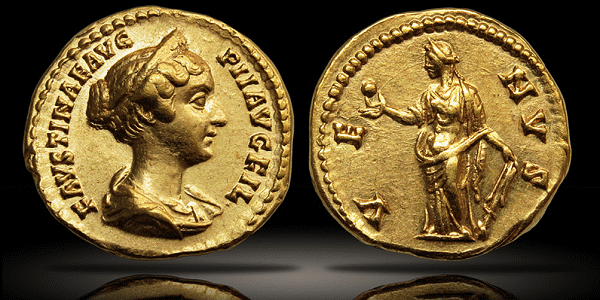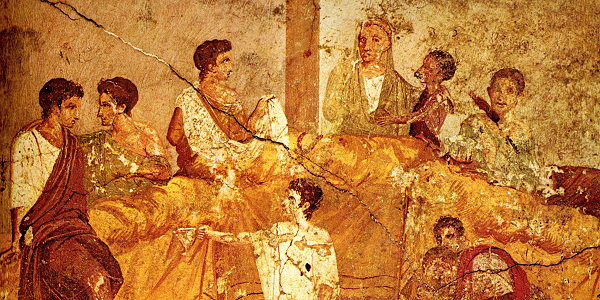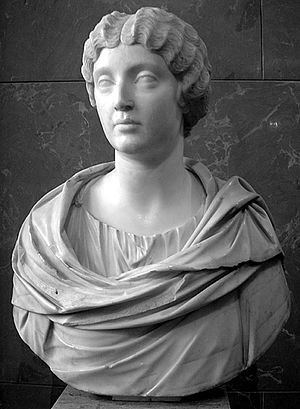
Ancinet Roman Gold Coin – Aureus of Faustina Junior, wife of Marcus Aurelius
By Russell A. Augustin, AU Capital Management, LLC ……
Annia Galeria Faustina was a daughter of Roman Emperor Antoninus Pius. She was named after her mother and was her parents’ fourth and youngest child and their second daughter. She was also their only child to survive to adulthood and was born and raised in Rome.
The Family of Faustina the Younger
Her great uncle, the emperor Hadrian, had arranged with her father for Faustina to marry Lucius Verus. On 25 February 138, she and Verus were betrothed. Verus’ father was Hadrian’s first adopted son and his intended heir. However, when Verus’ father died, Hadrian chose Faustina’s father to be his second adopted son. Eventually, he became Hadrian’s successor. Faustina’s father ended the engagement between his daughter and Verus and arranged for Faustina’s betrothal to her maternal cousin, Marcus Aurelius. Aurelius was also adopted by her father.
When Antoninus Pius died on 7 March 161, Marcus and Lucius Verus ascended to the throne and became co-rulers. Faustina then became empress.

Her Personality
Unfortunately, we can not find much that has survived from the Roman sources regarding Faustina’s life. Though much of what was written gives us a generally negative view of her character. Faustina seems to have been held in high esteem by her husband and was given divine honors after her death. However, Cassius Dio and the Augustan History accuse Faustina of ordering deaths by poison and execution. She has also been accused of instigating the revolt of Avidius Cassius against her husband. The Augustan History also mentions her adultery with sailors, gladiators, and other men (some having imperial rank).
We do know that Faustina accompanied her husband on various military campaigns and attempted to make her home out of an army camp. As a result, she enjoyed the love and reverence of Roman soldiers. Marcus Aurelius gave her the title of Mater Castrorum or ‘Mother of the Camps’. Between 170–175, she was in the north, and in 175, she accompanied Aurelius to the east.
The Ancient Roman Gold Coin of Faustina
There are several bust types used on aurei of Faustina Junior as mentioned in the classic British catalogue by Mattingly and Sydenham, on the Roman Imperial Coinage (RIC), which classifies four varieties. The Roman Gold Coin pictured above and part of the Colosseo Collection is apparently an unrecorded variant and extremely rare, and is from the Lexington Collection of Jonathan K. Kern.
 The standard bust type is a draped bust right with head bare. The three variants of this ancient Roman gold coin are with bust left, with a band of pearls in Faustina’s hair, and with her wearing a stephane. Of these, the latter is certainly the rarest.
The standard bust type is a draped bust right with head bare. The three variants of this ancient Roman gold coin are with bust left, with a band of pearls in Faustina’s hair, and with her wearing a stephane. Of these, the latter is certainly the rarest.
To further complicate matters with this coin, there are three varieties in RIC of this reverse type paired with this obverse legend: one with the rudder set on a dove (RIC 515), one without the dove (RIC 516), and one with a dolphin entwined around the rudder (RIC 517).
This Roman Gold Coin
As there is clearly something at the base of the prow, the current specimen is either an example of RIC 515 or RIC 517. One would want to lean towards the latter number, as it is the only one listed with a sub-variety of the bust type with Faustina wearing a stephane (517b).
Nonetheless, looking through multiple sources this type still remains completely unlisted in Calicó’s corpus, as he does not have a single example with this bust type paired with this Roman gold coin reverse type. Therefore, it would seem that the present specimen is a completely unlisted variety of an already rare type.
Faustina Junior, wife of Marcus Aurelius (Augusta, 147-175 CE). AV aureus (19mm, 7.22 gm, 12h). NGC AU 5/5 – 4/5, Fine Style.Rome, under Antoninus Pius, ca. 138-161 CE. FAVSTINA AVG P II AVG FIL, draped bust of Faustina right, wearing stephane / V-E-NVS, Venus standing left, holding apple and rudder; dolphin entwined around rudder. RIC (Aurelius) 515 variant (bust type). Calicó 2097 variant (same).
* * *




